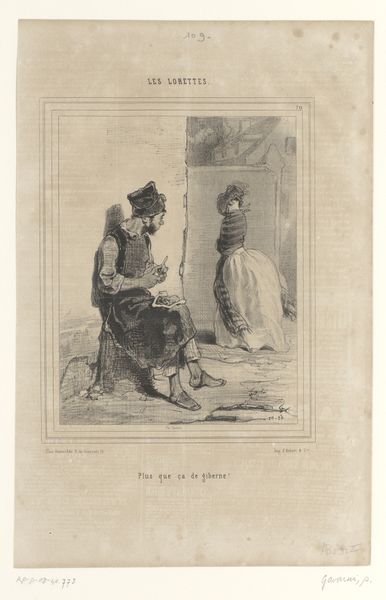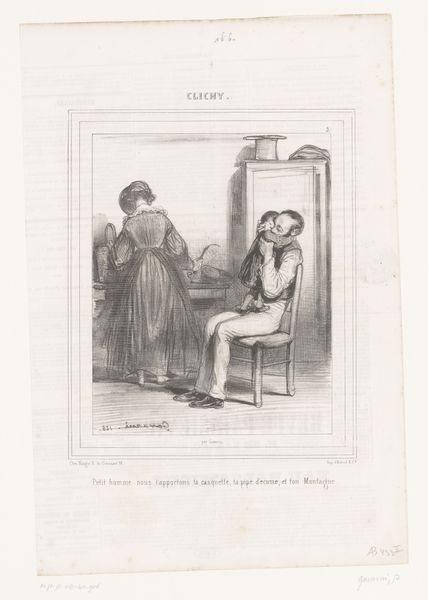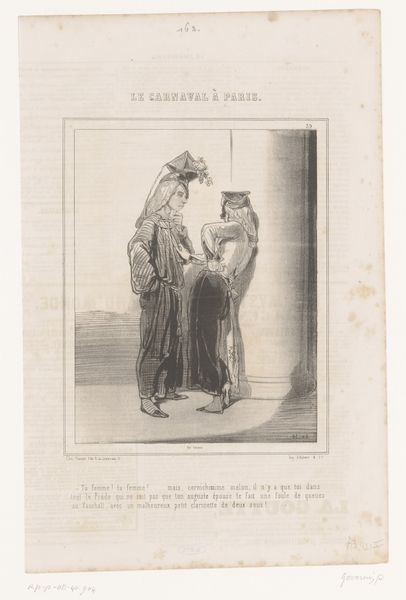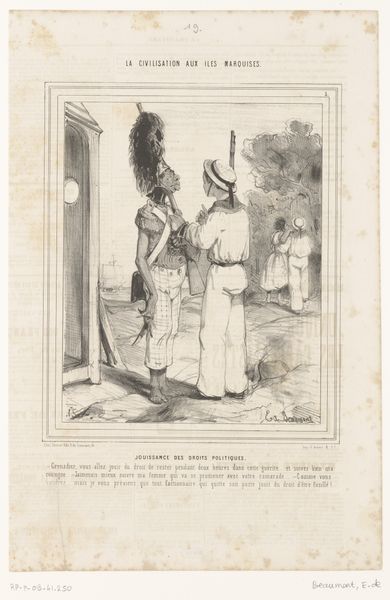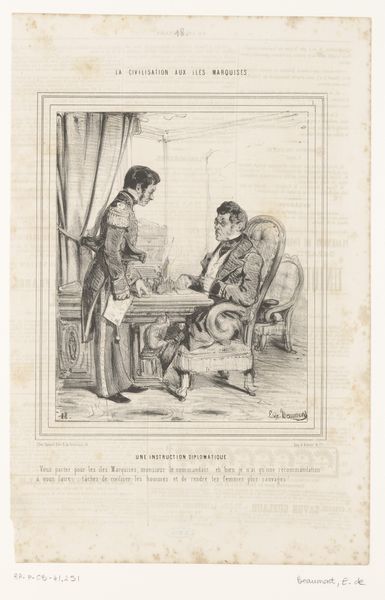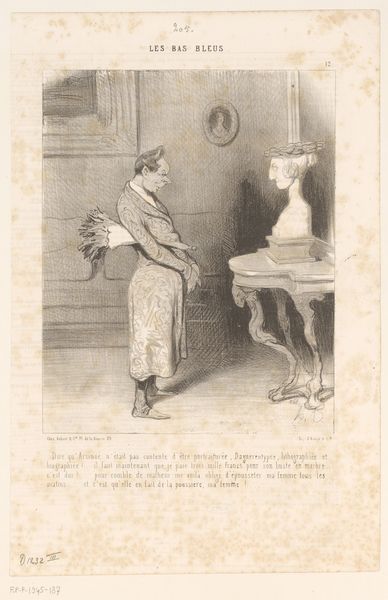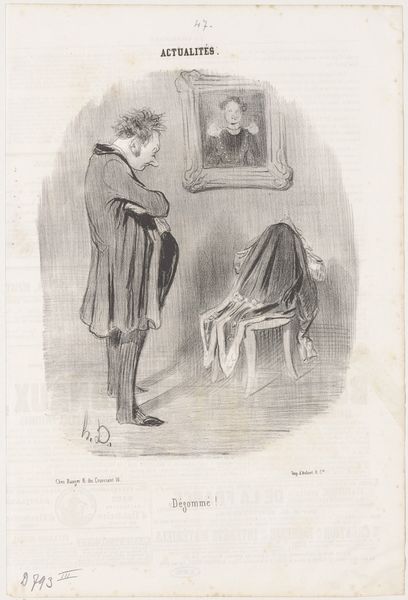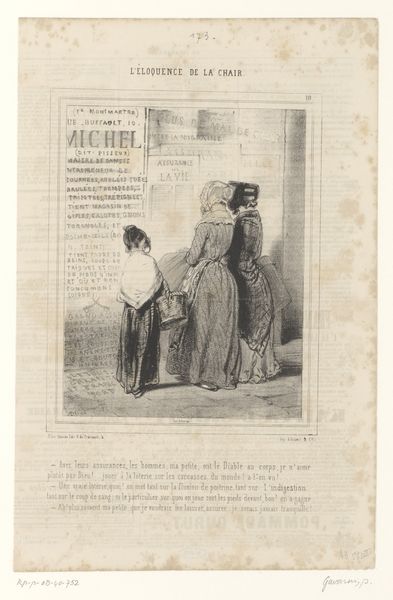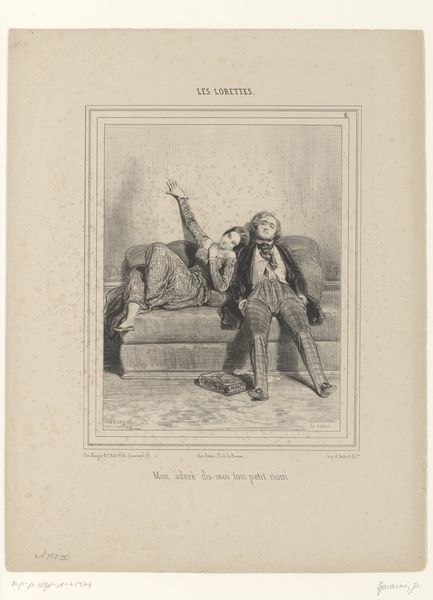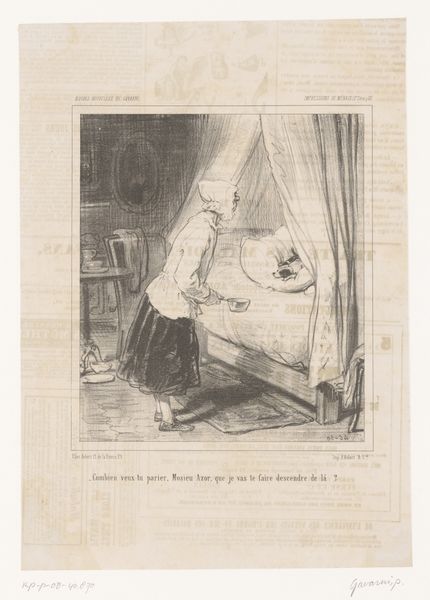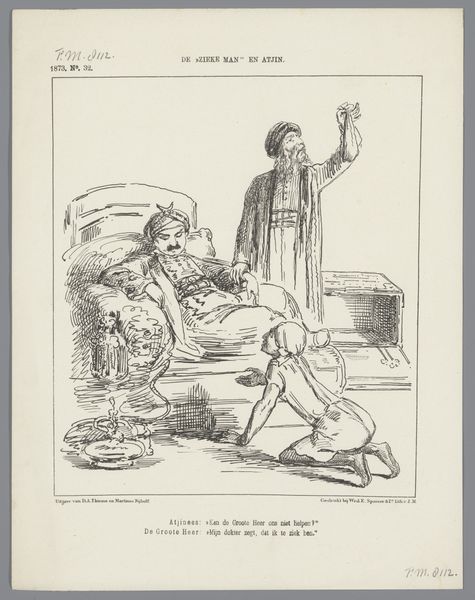
drawing, print, etching
#
portrait
#
drawing
# print
#
etching
#
caricature
#
romanticism
#
genre-painting
Dimensions: height 313 mm, width 232 mm
Copyright: Rijks Museum: Open Domain
Editor: This is "Gevangene in gesprek met cipier in de cel" – "Prisoner talking to a jailer in his cell" – an etching by Paul Gavarni, from 1846. It’s held here at the Rijksmuseum. The scene is stark, a prisoner in elaborate dress sits on a stool while a rotund guard looms over him. What strikes me is the contrast in their appearances. How do you interpret that difference? Curator: The etching style immediately establishes a visual language of caricature, pushing the boundary between observation and commentary. The contrast isn’t just visual; it speaks volumes about societal power dynamics. Note how Gavarni uses light and shadow to highlight the prisoner's languid pose and refined attire. Think of Romanticism, a current pushing back against the industrial standardization of man, here expressed as an inmate whose character resists easy categorization, sitting underneath a sign above that says "La Pistole." Do you feel the image invokes societal unease about criminality and justice? Editor: I do. The prisoner seems almost nonchalant, which is unsettling. The 'pistole', then, can't simply be the action to resist but a kind of 'slang' from that era. I also read that Gavarni sketched prisoners while he was in debtors' prison. So this Romantic view also has some lived experiences informing it. Curator: Precisely! Consider how the space itself is rendered—the confinement, but also the table, pitcher and even the writing within the frame, implying a world just beyond our sight. It subtly tells of resilience amidst constraints, an individual spirit enduring confinement. This space, this very real lived space, is thick with human interaction across different positions and powers. Do you feel a connection between their dress and their inner life? Editor: Definitely. The prisoner's attire, the way he's crossing his legs and even the almost casual position on the chair speak of an affectation. Curator: The visual grammar creates that feeling. By contrasting such types, Gavarni invites reflection. Editor: It's like he's suggesting these visual shorthands can expose deep truths. Curator: Exactly! The lasting value comes from uncovering social stratifications, class struggle, and personal identity amidst a certain cultural era of France.
Comments
No comments
Be the first to comment and join the conversation on the ultimate creative platform.
